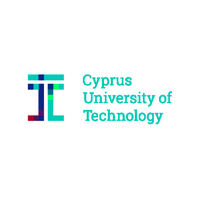预约演示
更新于:2025-05-07
Lawsonia inermis Extract
指甲花提取物
更新于:2025-05-07
概要
基本信息
原研机构- |
在研机构- |
权益机构- |
最高研发阶段无进展临床3期 |
首次获批日期- |
最高研发阶段(中国)- |
特殊审评- |
登录后查看时间轴
关联
5
项与 指甲花提取物 相关的临床试验IRCT20191106045356N21
Formulation of a topical gel containing Lawsonia inermis extract and Aloe vera and evaluation its effects on the healing process of second degree burns: A randomized double_blinded placebo_controlled trial.
开始日期2024-10-21 |
申办/合作机构- |
CTRI/2024/09/074530
Formulation and evaluation of topical preparation of Lawsonia inermis L. (Lythraceae) for the prevention of capecitabine induced hand-foot syndrome in Cancer patients - NIL
开始日期2024-10-07 |
申办/合作机构- |
IRCT20191106045356N20
Formulation of a topical gel containing Lawsonia inermis and Crocin and evaluation its effects on preventing radiation-induced dermatitis in breast cancer patients: A randomized double-blinded placebo-controlled trial.
开始日期2024-08-21 |
申办/合作机构- |
100 项与 指甲花提取物 相关的临床结果
登录后查看更多信息
100 项与 指甲花提取物 相关的转化医学
登录后查看更多信息
100 项与 指甲花提取物 相关的专利(医药)
登录后查看更多信息
46
项与 指甲花提取物 相关的文献(医药)2023-02-02·Cureus
Severe Hyperbilirubinemia Secondary to Henna Application in a Neonate With G6PD Deficiency: A Case Report and Literature Review
作者: Al-Hinai, Abdulhamid ; AlSawafi, Aza S
2022-06-01·DARU Journal of Pharmaceutical Sciences4区 · 医学
Topical henna and curcumin (Alpha®) ointment efficacy for prevention of capecitabine induced hand-foot syndrome: A randomized, triple-blinded, placebo-controlled clinical
4区 · 医学
Article
作者: Rasta, Sara ; Elyasi, Sepideh ; Taghizadeh-Kermani, Ali ; Hosseini, Sare
2022-05-01·Journal of Ethnopharmacology2区 · 医学
The efficacy of henna (Lawsonia inermis L.) mouthwash versus chlorhexidine gluconate 0.2% mouthwash as adjuvant therapy of oral lichen planus: A randomized double-blind clinical trial
2区 · 医学
Article
作者: Tajadini, Haleh ; Karbasi, Nahid ; Nekouei, Amir H ; Kakoei, Shahla ; Raeiszadeh, Mahboobeh
100 项与 指甲花提取物 相关的药物交易
登录后查看更多信息
研发状态
10 条进展最快的记录, 后查看更多信息
登录
| 适应症 | 最高研发状态 | 国家/地区 | 公司 | 日期 |
|---|---|---|---|---|
| 坐骨神经痛 | 临床3期 | 伊朗 | 2021-10-11 | |
| 皮炎 | 临床3期 | 伊朗 | 2021-08-21 | |
| 皮疹 | 临床3期 | 伊朗 | 2018-02-24 | |
| 放射性皮炎 | 临床3期 | 伊朗 | 2018-02-24 | |
| 手足综合症 | 临床3期 | 塞浦路斯 | 2017-06-01 | |
| 宫颈炎 | 药物发现 | 伊朗 | 2021-08-06 |
登录后查看更多信息
临床结果
临床结果
适应症
分期
评价
查看全部结果
| 研究 | 分期 | 人群特征 | 评价人数 | 分组 | 结果 | 评价 | 发布日期 |
|---|
No Data | |||||||
登录后查看更多信息
转化医学
使用我们的转化医学数据加速您的研究。
登录
或

药物交易
使用我们的药物交易数据加速您的研究。
登录
或

核心专利
使用我们的核心专利数据促进您的研究。
登录
或

临床分析
紧跟全球注册中心的最新临床试验。
登录
或

批准
利用最新的监管批准信息加速您的研究。
登录
或

特殊审评
只需点击几下即可了解关键药物信息。
登录
或

生物医药百科问答
全新生物医药AI Agent 覆盖科研全链路,让突破性发现快人一步
立即开始免费试用!
智慧芽新药情报库是智慧芽专为生命科学人士构建的基于AI的创新药情报平台,助您全方位提升您的研发与决策效率。
立即开始数据试用!
智慧芽新药库数据也通过智慧芽数据服务平台,以API或者数据包形式对外开放,助您更加充分利用智慧芽新药情报信息。
生物序列数据库
生物药研发创新
免费使用
化学结构数据库
小分子化药研发创新
免费使用



